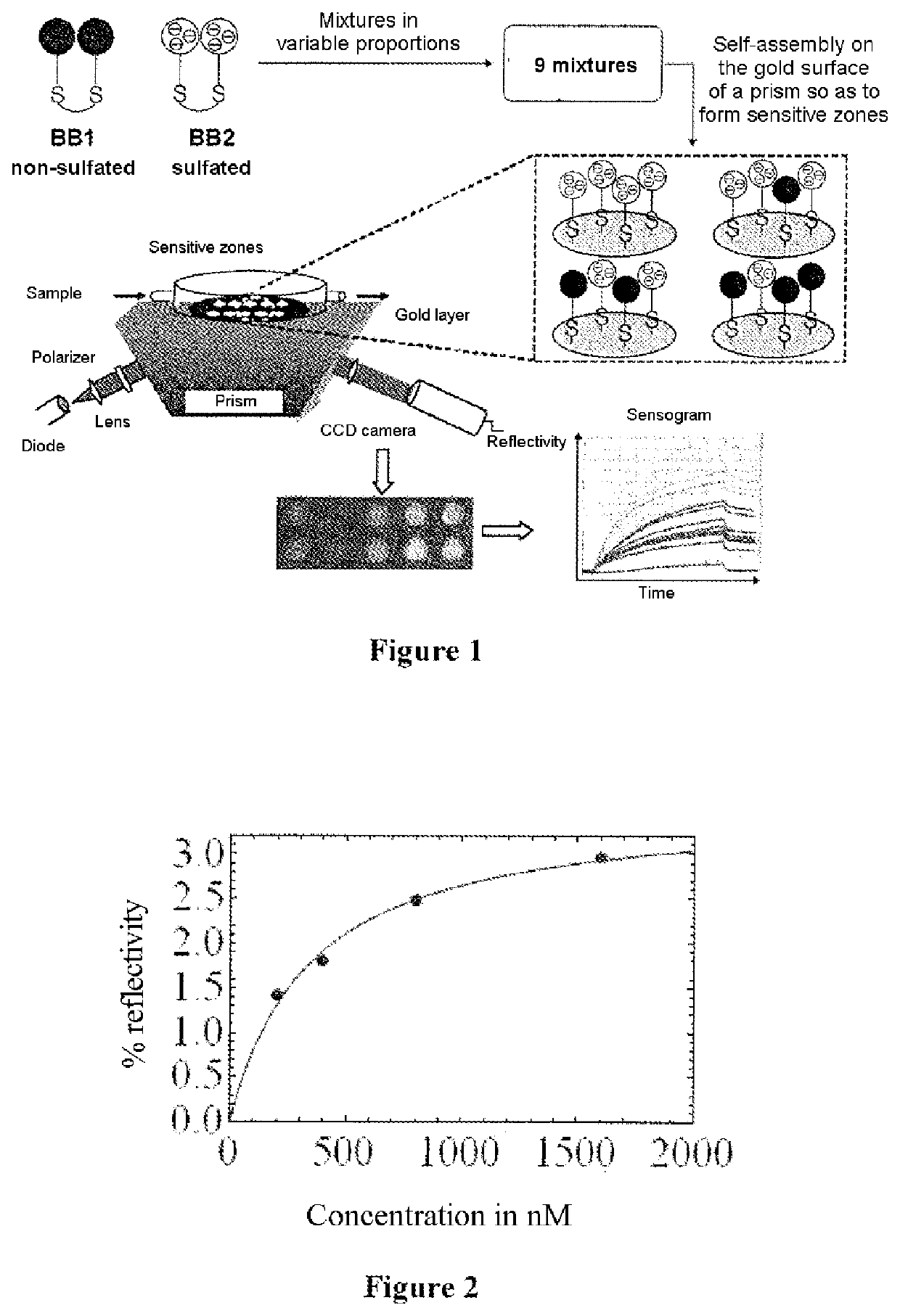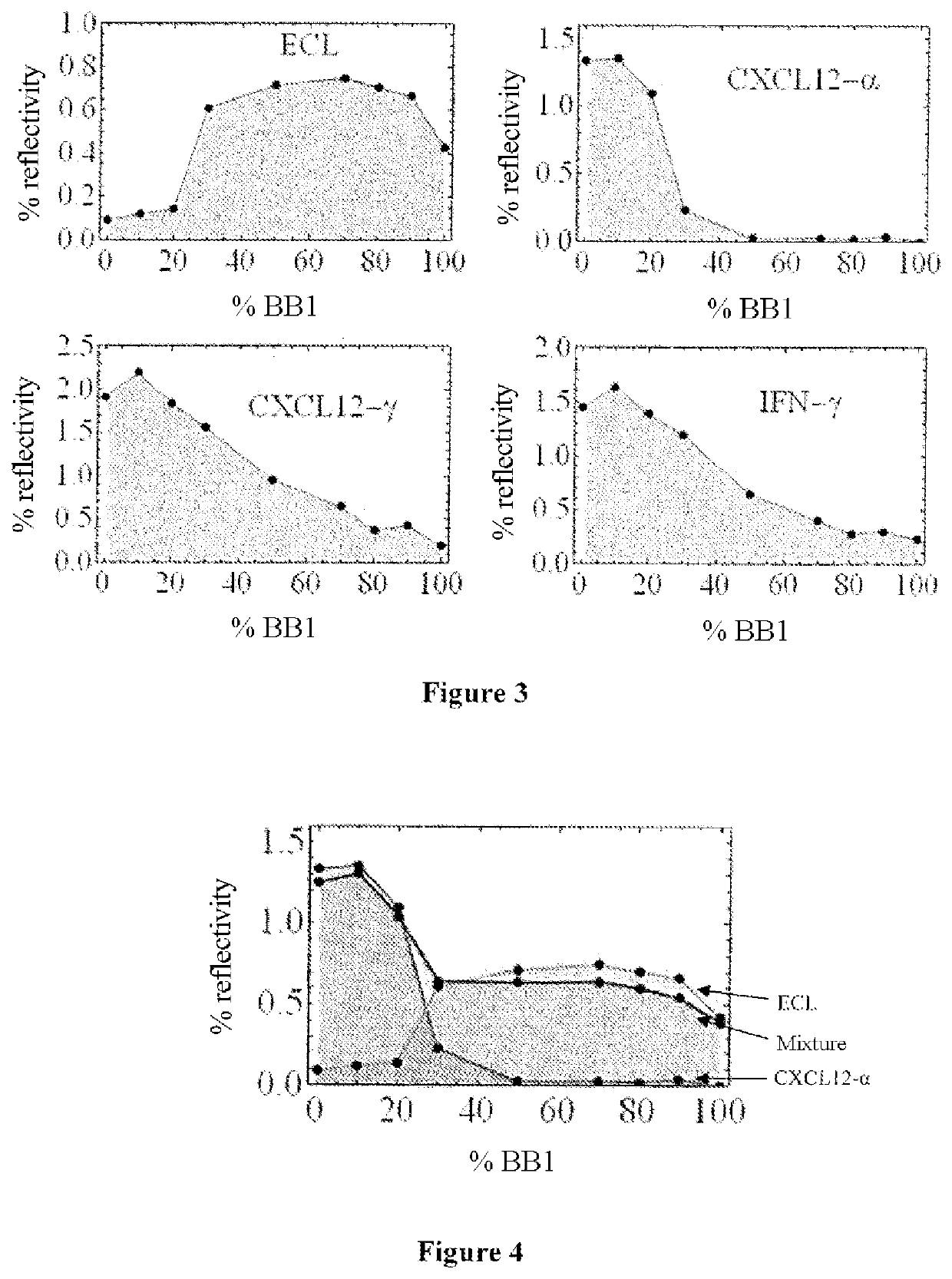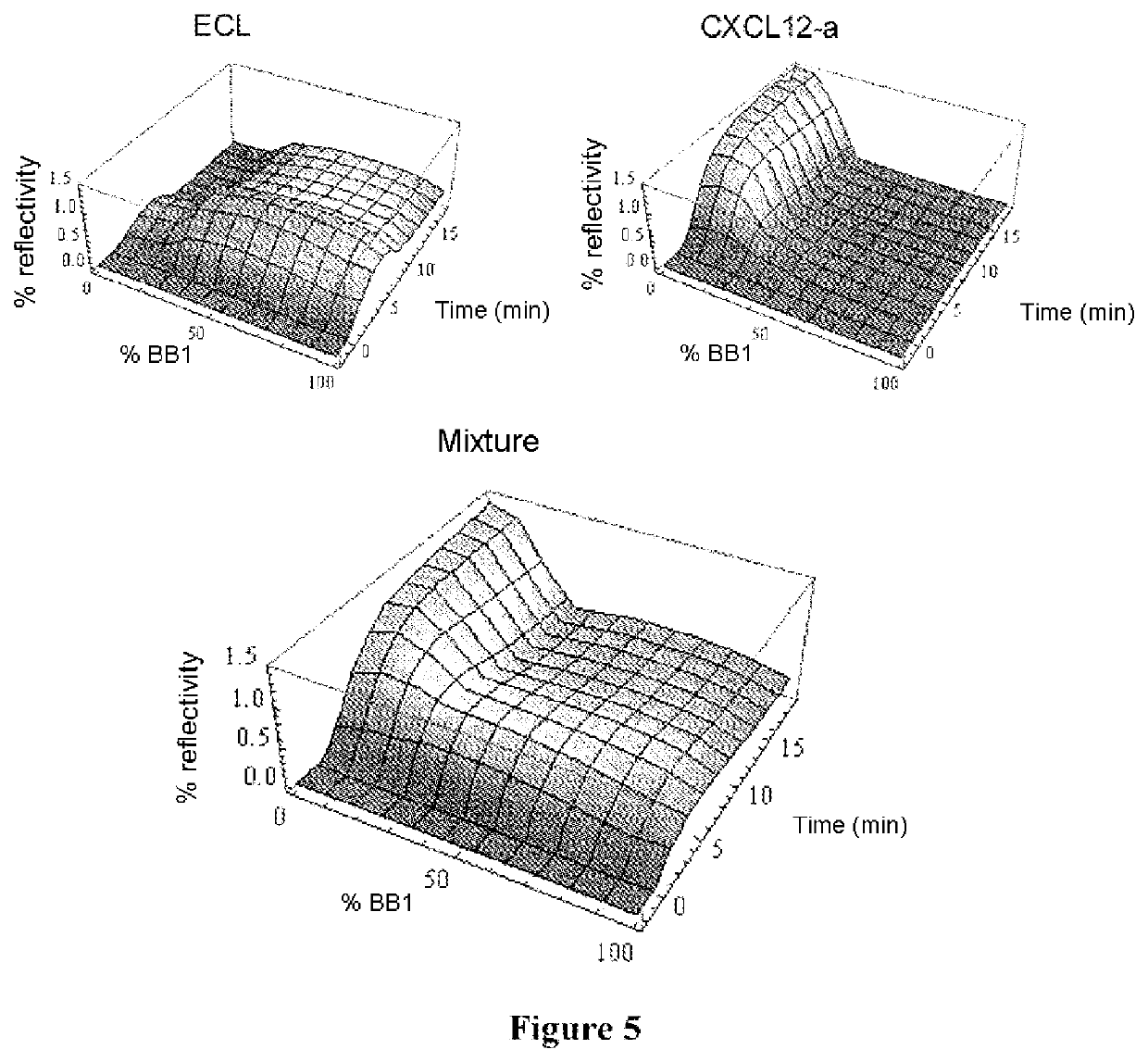Electronic nose or tongue sensors
a sensor and tongue technology, applied in the field of sensors, can solve the problems of difficult weighting, sensor response not continuous, complex production of objects,
- Summary
- Abstract
- Description
- Claims
- Application Information
AI Technical Summary
Benefits of technology
Problems solved by technology
Method used
Image
Examples
example 1
Sensor of which the Sensitive Zones Consist of Mixtures of 2 Receptors
[0105]1. Fabrication of the Sensor
[0106]Two simple molecules were used as building bricks (BB) to construct a sensor comprising a support accommodating several sensitive zones combining variable proportions of receptors: lactose (BB 1) and sulfated lactose (BB 2). Nine mixtures with [BB1] / ([BB1]+[BB2]) ratios of 0, 10, 20, 30, 50, 70, 80, 90 and 100% were prepared, the total concentration being constant at 20 μM. The mixtures were then deposited on a support formed by the gold surface of a prism usable for surface plasmon resonance imaging (SPRi) and were kept in contact with the surface of the prism overnight. The chip thus formed was then washed with ethanol and then dried under a stream of N2.
[0107]Consequently, after self-assembly, a sensor comprising nine sensitive zones, each having different proportions of BB 1 and BB 2, could be obtained, as is indicated in FIG. 1. This sensor was then used to analyze medi...
example 2
Method for Selecting Appropriate Combinatorial Surfaces
[0125]The use of decorated nanoparticles (NPs) as a therapeutic agent is a widely explored subject. Several authors have thus described systems which have a certain effectiveness.
[0126]Among the coatings used, mention may be made of: (i) specific ligands, such as antibodies for example, which will interact directly with their target, molecule to molecule, or, (ii) developed more recently, coatings composed of a small molecule (Bowman et al. (2008) J. Am. Chem. Soc. 130:6896-6897; Baram-Pinto et al. (2009) Bioconjugate Chem. 20:1497-1502; Baram-Pinto et al. (2010) Small 6:1044-1050; Rele et al. (2005) J. Am. Chem. Soc. 127:10132-10133) or of an assembly of small molecules which in themselves individually do not have very defined biological properties (Ojeda et al. (2007) Carbohydrate Research 342:448-459; Di Gianvincenzo et al. (2010) Bioorganic &Medicinal Chemistry Letters 20:2718-2721; Bresee et al. (2010) Chem. Commun. 46:7516...
PUM
| Property | Measurement | Unit |
|---|---|---|
| area | aaaaa | aaaaa |
| thickness | aaaaa | aaaaa |
| thickness | aaaaa | aaaaa |
Abstract
Description
Claims
Application Information
 Login to View More
Login to View More - R&D
- Intellectual Property
- Life Sciences
- Materials
- Tech Scout
- Unparalleled Data Quality
- Higher Quality Content
- 60% Fewer Hallucinations
Browse by: Latest US Patents, China's latest patents, Technical Efficacy Thesaurus, Application Domain, Technology Topic, Popular Technical Reports.
© 2025 PatSnap. All rights reserved.Legal|Privacy policy|Modern Slavery Act Transparency Statement|Sitemap|About US| Contact US: help@patsnap.com



